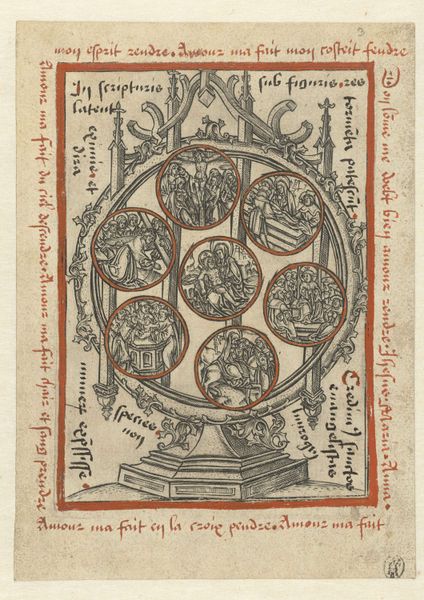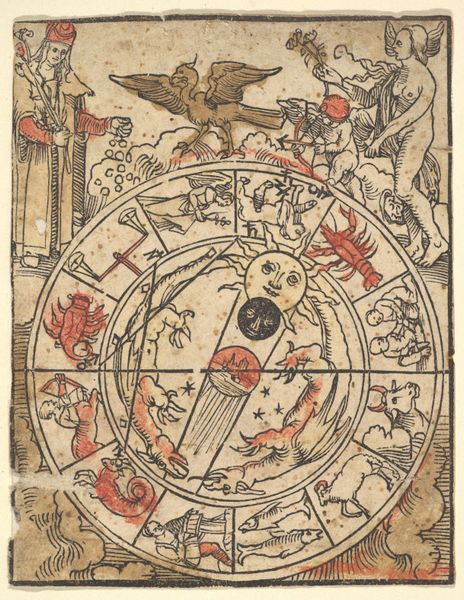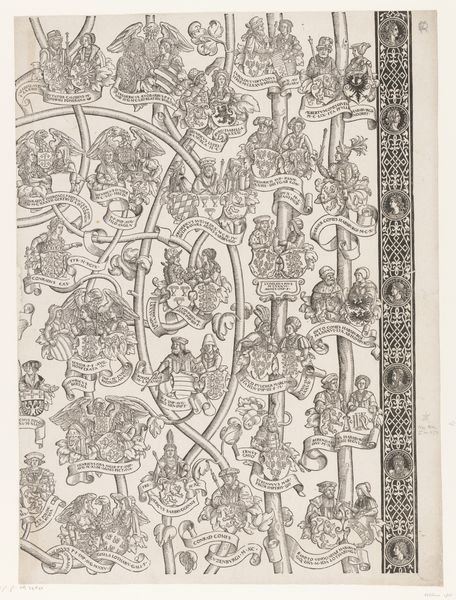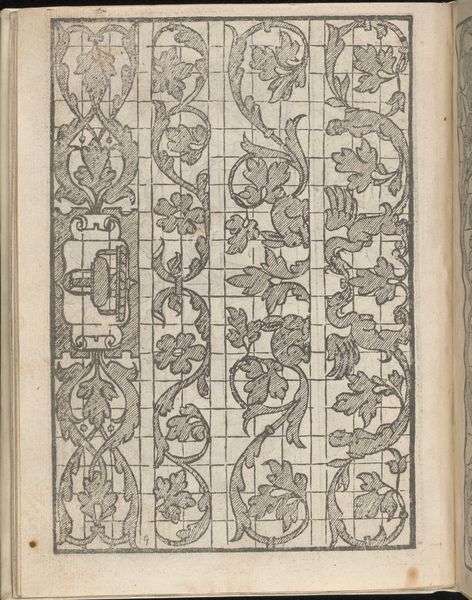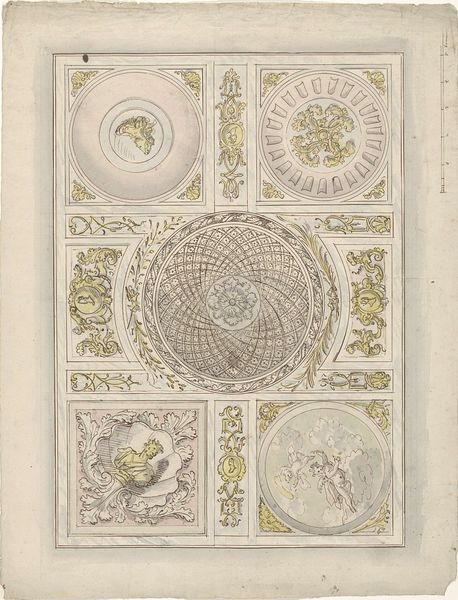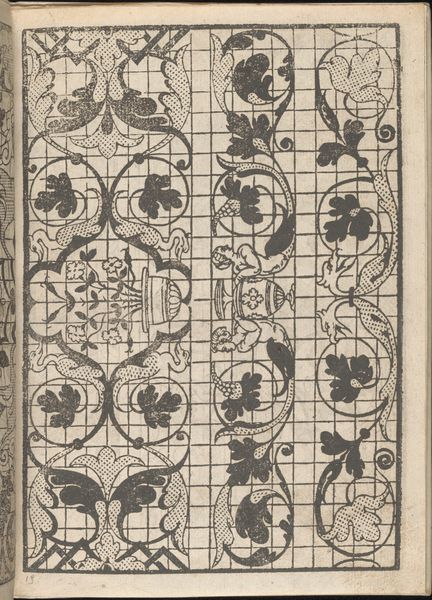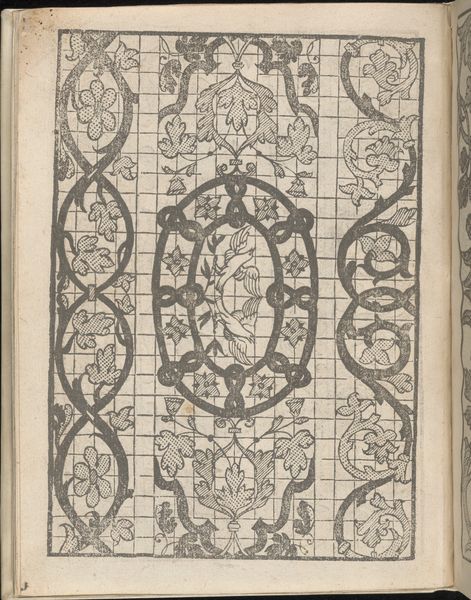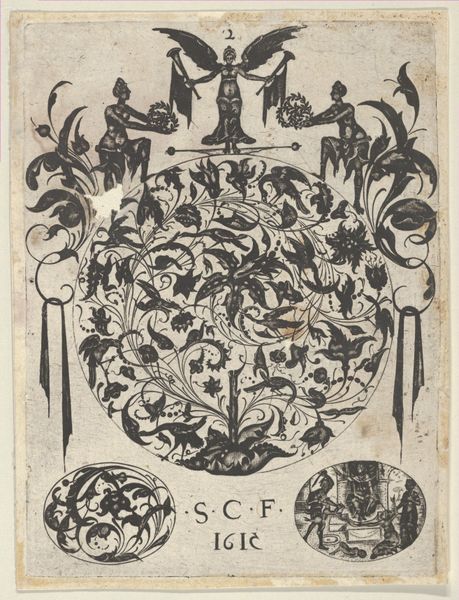
drawing, print, paper, ink
#
drawing
# print
#
paper
#
ink
#
watercolour illustration
#
watercolor
Dimensions: image: 41.3 x 29.2 cm (16 1/4 x 11 1/2 in.) sheet: 38.4 x 28.8 cm (15 1/8 x 11 5/16 in.) overall (external frame dimensions): 59.7 x 44.5 cm (23 1/2 x 17 1/2 in.)
Copyright: National Gallery of Art: CC0 1.0
Curator: Looking at this "Map of the World," a print rendered in ink and watercolour from around 1480, I'm struck by its overwhelming detail. What a strange combination of precision and imagination. Editor: Yes, it's captivating! There’s a naive, almost childlike quality to it, while the sheer amount of information crammed in gives a sense of profound seriousness. I'm drawn in by the ways different regions and cultures are portrayed, not only geographically but also symbolically. I wonder about the contemporary lens through which the artist perceived the world. Curator: Absolutely. The map needs to be situated within the context of its creation and consumption. It provides insight into the intersection of knowledge, power, and representation during the late medieval era. How did this particular map, produced within a specific workshop, function socially? What ideological purposes did it serve? For example, Jerusalem is depicted at the center. Editor: Ah, the centricity of Jerusalem definitely speaks volumes. Considering that cartography at the time wasn't only a scientific pursuit, but heavily intertwined with religious and cultural narratives. Did it, perhaps, shape the understanding of those who beheld it? It surely informed their views of 'otherness.' Look at how Asia, Europe, and Africa seem arranged—not just continents, but carefully curated identities. Curator: Precisely. Understanding the symbolism embedded in these visual choices allows us to interrogate how prevailing power structures and nascent colonial ambitions were constructed. The images themselves may betray hierarchical orderings of different civilizations based on evolving religious and philosophical conceptions. What can these illustrations reveal about power dynamics? Editor: It is remarkable, this piece invites us to trace those power dynamics. To ask questions about who controlled the narrative then, and to reflect on the continued impact these historical portrayals might still have on our own contemporary perceptions. The ink and paper have stories of imperialism and intercultural misunderstanding imprinted right into their fibers. Curator: A key reminder to constantly revisit and question established historical and cultural frameworks. Editor: Indeed, viewing this beautiful yet imposing map compels us to do exactly that. To embark on our own journey of critical rediscovery.
Comments
No comments
Be the first to comment and join the conversation on the ultimate creative platform.

